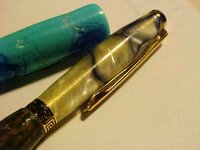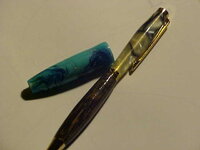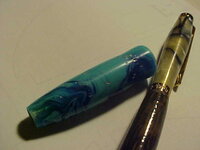ironman123
Member
Acrylics is very new to me. I tried one today and one end cracked off and scattered about on the surface is a zillion little holes. And little shards all over my shop and me.
I was using same rpm (1760) that I have been turning wood with and using a 3/8 gouge.
Am I going at it all wrong????? And I may need to slow myself down with tool movement.
Advice and guidance appreciated. Thanks a bunch.
Ray ironman123
I was using same rpm (1760) that I have been turning wood with and using a 3/8 gouge.
Am I going at it all wrong????? And I may need to slow myself down with tool movement.
Advice and guidance appreciated. Thanks a bunch.
Ray ironman123



